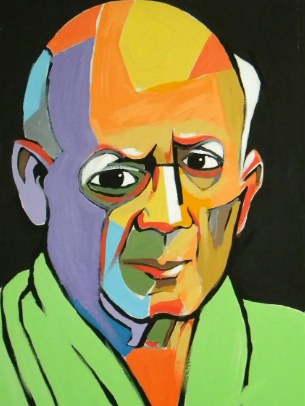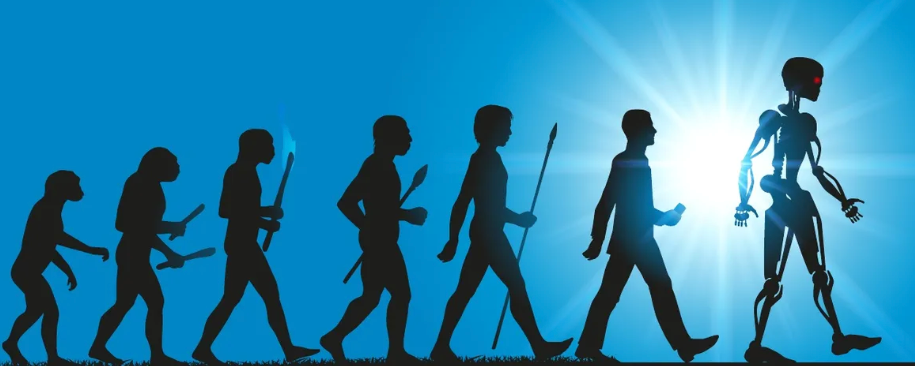Last Article’s Recap on this Topic: Nvidia, a company known for dominating the GPUs market, has become a key player in the AI revolution. With an annual revenue of $26.91 billion, the tech giant made its foray into AI with the Tesla GPU in 2006 and further advanced its AI capabilities with the Pascal GPU in 2015. Under the leadership of CEO Jensen Huang, Nvidia has driven innovation and supported cutting-edge AI applications, making significant contributions to industries such as gaming, scientific computing, and autonomous vehicles.
Imagine a world where you could create stunning visuals, breathtaking animations, and realistic 3D models with a simple text prompt.
A world where creativity is no longer limited by your skills, but rather, fueled by your imagination.
This is not just a fantasy, but a reality made possible by NVIDIA’s latest innovation, Picasso.
Introducing NVIDIA Picasso
NVIDIA, a tech giant known for its cutting-edge GPU technology, has recently announced the launch of Picasso, a cloud service designed to revolutionize the way we create and deploy generative AI applications.
Optimized for maximum training and inference performance on NVIDIA DGX Cloud, Picasso is poised to become the go-to platform for artists, designers, and creators across the globe.
But what exactly is NVIDIA Picasso, and why is it such a big deal?
It is a cloud service that leverages state-of-the-art Edify foundation models to generate high-resolution images, high-fidelity videos, and intricate 3D assets.
In simple terms, it allows users to input textual prompts, and the AI takes care of the rest, transforming those prompts into stunning visual content. The service is designed to simplify the creative process, opening up a world of possibilities that were previously unimaginable.

The Magic of NVIDIA Picasso
Imagine being a graphic designer working on a project to create promotional material for an upcoming sci-fi movie. In the past, you would have to spend countless hours manually designing posters, banners, and trailers. With NVIDIA Picasso, you could simply input a text prompt like “A futuristic cityscape with flying cars and neon lights,” and the AI would generate a stunning visual that matches your vision.
Or picture yourself as a 3D artist looking to create a character model for a video game. Instead of painstakingly sculpting every detail, you could use Picasso to input a description like “A fierce warrior with a flaming sword and dragon-scale armor,” and the AI would produce a detailed 3D model that brings your character to life.
The applications of Picasso are not limited to the entertainment industry. Architects could use the service to generate realistic 3D renders of buildings, while marketers could create eye-catching ads and social media content with ease. The possibilities are endless, and there is no limit to your imagination.
Driving Innovation Forward
NVIDIA has formed strategic partnerships with key industry players to take Picasso to new heights. Getty, a leading provider of visual content, is collaborating with NVIDIA to train Edify image and video models on its fully licensed data. Shutterstock, a global marketplace for creative assets, is working with NVIDIA to train Edify 3D models on its extensive library of licensed data. Additionally, Adobe is partnering with NVIDIA to integrate generative AI models into its Creative Cloud flagship products like Photoshop, Premiere Pro, and After Effects.
These partnerships will enable users to access a wealth of high-quality data and incorporate AI-generated content seamlessly into their workflows. Whether you’re a professional designer looking to streamline your projects or a hobbyist exploring new creative avenues, NVIDIA Picasso is the tool you need.
Creativity in a new Era
The launch of NVIDIA Picasso marks the beginning of a new era in creativity; an era where generative AI empowers individuals and businesses to unlock their full creative potential. As we look ahead, we can expect to see a surge of innovative applications and services built on it’s robust platform.

So, as you embark on your creative journey, remember that the future is now, and it’s brighter than ever, thanks to NVIDIA Picasso.
If you’re excited to explore the world of generative AI and unleash your imagination, be sure to sign up to be notified of NVIDIA Picasso service availability. As it continues to evolve, we can anticipate a future where creativity is not only encouraged but truly limitless.
In this fast-paced digital age, the demand for high-quality visual content is at an all-time high. From video game development to marketing campaigns, the ability to create stunning visuals can be a game-changer. And with NVIDIA Picasso, you’ll be equipped with the tools you need to stand out in a competitive landscape.
Imagine the impact that this technology could have on industries like fashion and interior design. Fashion designers could use the service to generate virtual runway shows, complete with AI-generated models showcasing their latest collections. Interior designers could provide clients with realistic 3D renders of potential room layouts, helping them visualize their dream space.
Beyond the creative fields, it’s applications are vast and varied. In the medical field, for example, researchers could use the service to generate accurate 3D models of organs and tissues for study and analysis. In the automotive industry, engineers could use Picasso to create virtual prototypes of new vehicle designs, speeding up the development process and reducing costs.
As more and more businesses and individuals tap into the power of generative AI, we can expect to see a shift in the way we approach creativity and innovation. Gone are the days of being constrained by technical limitations. Instead, we’ll be able to focus on exploring new ideas and pushing the boundaries of what once seemed impossible.
NVIDIA Picasso represents a monumental leap forward in the world of generative AI. And as we look to the future, one thing is clear: the creative possibilities are endless, and the impact will be profound.
To better understand about this amazing technology:
https://www.youtube.com/watch?v=dHY5LWfkYLk
“The video above is from “The AIGRID”, a channel that covers the biggest news of the century. All rights belong to their respective owners.”
In conclusion, NVIDIA Picasso is more than just a cloud service; it’s a catalyst for change, a platform that empowers creators to bring their visions to life in ways they never thought possible. Whether you’re a professional or just new, Picasso is a game-changer that you won’t want to miss.
So get ready to embark to the limitless creativity of this technology? Take the first step and discover the magic of NVIDIA Picasso today.
Relevant Articles:
Hugging Face: The Emoji that Sparked a ML Revolution
How to Install Stable Diffusion: Step by Step Guide
GPT-4 Can Improve Itself: How the AI Giant Learns From its Mistakes

